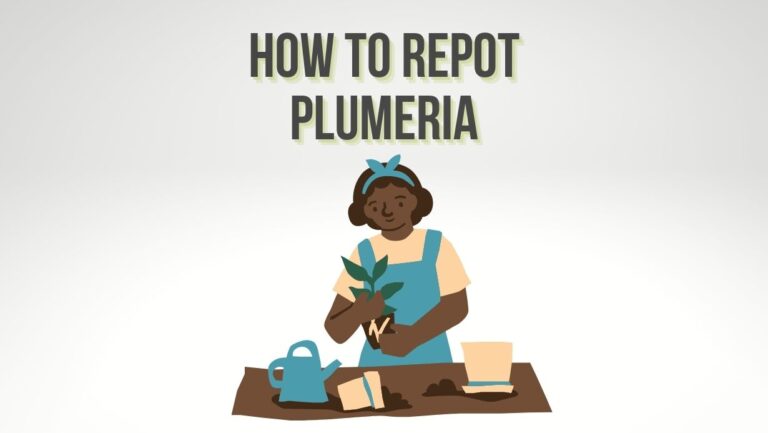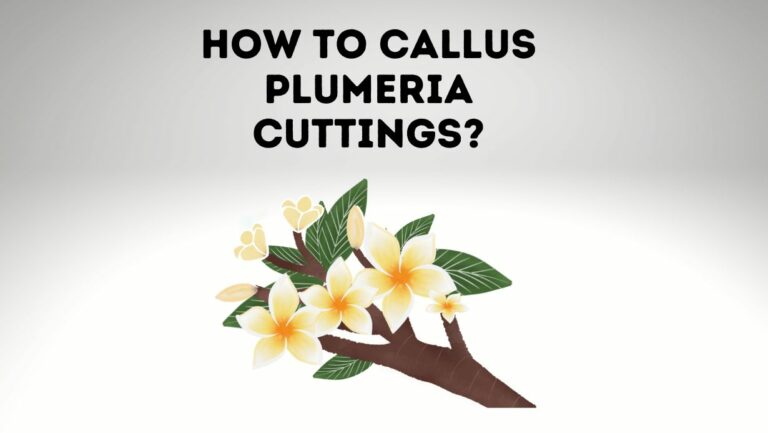
Plumerias, with their captivating flowers and tropical charm, are sought after by gardeners and enthusiasts alike. Understanding the growth cycle of plumeria plants and their growth rate is important for their proper care and maintenance. In this article, we will explore how fast plumerias grow and delve into the stages of their growth cycle.
Understanding Plumeria Growth
The growth rate of plumeria
Plumerias are relatively slow-growing plants compared to some other flowering species. The growth rate of plumeria can vary depending on various factors such as the cultivar, growing conditions, and care provided. On average, plumerias can grow anywhere from a few inches to a foot or more in a single growing season.
Factors influencing plumeria growth
Several factors influence the growth of plumeria plants. These include climate, environmental conditions, sunlight exposure, temperature, soil quality, nutrition, watering, and maintenance practices.
Plumeria Growth Cycle
Plumerias go through a distinct growth cycle that encompasses various stages. Understanding this cycle can help you anticipate and manage the growth and development of your plumeria plant. The typical growth cycle of plumeria can be summarized as follows:
Dormant period
During the dormant period, which usually occurs in winter, plumeria plants shed their leaves and enter a rest phase. Growth is minimal, and the plant conserves energy for the upcoming growing season.
Bud break and leaf emergence
As the weather warms and spring arrives, plumeria plants begin to break their dormancy. Buds start to emerge, and new leaves begin to unfurl from the tips of the branches. This marks the beginning of active growth.
Vegetative growth
During the vegetative growth phase, plumeria plants focus on developing a robust foliage canopy. The stems elongate, and more leaves are produced. This stage is crucial for building a strong foundation and energy reserves for future flowering.
Flowering stage
Plumerias enter the flowering stage when they have reached a certain level of maturity. Buds develop into stunning blooms, adorning the plant with their vibrant colors and captivating fragrance. The duration of the flowering stage varies depending on the cultivar and growing conditions.
Seed formation and pod development
After successful pollination, plumeria flowers may produce seed pods. These pods contain seeds that can be harvested for propagation. The development of seed pods usually occurs towards the end of the flowering stage.
Senescence and dormancy
As the growing season comes to a close, plumeria plants begin to senesce. Leaves may turn yellow and drop, signaling the onset of dormancy. The plant prepares for a period of rest during the dormant phase, conserving energy until the next growing season.
Factors Affecting Plumeria Growth
The growth of plumeria plants is influenced by various factors. Understanding and providing the optimal conditions for growth can enhance the plant’s overall development. Here are some key factors that affect plumeria growth:
Climate and environmental conditions
Plumerias thrive in warm climates and are sensitive to frost and cold temperatures. They require a frost-free environment to grow and flourish.
Sunlight and temperature requirements
Plumerias prefer full sun exposure for at least six to eight hours a day. They thrive in warm temperatures, ideally between 70 to 90°F (21 to 32°C). Ensuring adequate sunlight and maintaining suitable temperature ranges are crucial for optimal growth.
Soil and nutrition
Plumerias prefer well-draining soil that is rich in organic matter. A balanced fertilizer regimen, tailored to the specific needs of plumerias, promotes healthy growth and flowering.
Watering and irrigation
Proper watering practices are important for plumeria growth. They prefer a moderate watering schedule, allowing the soil to dry out slightly between watering sessions. Overwatering can lead to root rot and other issues, while underwatering can stunt growth.
Pruning and maintenance
Regular pruning and maintenance play a role in shaping plumeria growth. Pruning can encourage branching, promote airflow, and remove any dead or diseased parts, contributing to overall plant health.
Plumeria Growth Cycle Species Table
| Species | Growth Rate | Flower Color | Fragrance |
|---|---|---|---|
| Plumeria rubra | Fast | Various | Fragrant |
| Plumeria obtusa | Moderate | White, Yellow | Mild |
| Plumeria alba | Slow | White | Fragrant |
| Plumeria stenopetala | Moderate | White, Pink | Intense |
| Plumeria pudica | Moderate | White | Slight |
| Plumeria acutifolia | Fast | Various | Fragrant |
| Plumeria celadine | Fast | Yellow | Mild |
| Plumeria bahamensis | Slow | Pink, White | Slight |
How to Optimize Your Plumeria’s Growth Rate
Optimizing the growth rate of your plumeria can result in healthier plants and more abundant blooms. Here are some tips to help you maximize the growth potential of your plumeria:
- Provide ample sunlight: Plumerias thrive in full sun, so ensure they receive at least six to eight hours of direct sunlight each day. Place them in a location with maximum sun exposure.
- Maintain proper temperature: Plumerias prefer warm temperatures between 70 to 90°F (21 to 32°C). Avoid exposing them to cold drafts or frost, as it can stunt their growth.
- Use well-draining soil: Plumerias require soil that drains well to prevent waterlogged roots. Use a mixture of quality potting soil, perlite, and coarse sand or pumice to create a well-draining medium.
- Water appropriately: While plumerias prefer slightly dry conditions between watering, they still require regular watering. Water deeply, allowing the soil to dry out slightly between watering sessions.
- Fertilize regularly: Apply a balanced fertilizer formulated specifically for plumerias during the growing season. Follow the package instructions for dosage and frequency to ensure proper nutrition for optimal growth.
- Prune for branching: Pruning plumerias encourages branching and a fuller growth habit. After the dormant period, selectively prune the branches to promote a bushier shape and more flower-bearing stems.
- Protect from pests and diseases: Regularly inspect your plumeria plants for pests and diseases. Treat any issues promptly to prevent them from hampering the growth and overall health of your plants.
- Provide winter protection: If you live in a region with cold winters, protect your plumeria from frost and low temperatures. Consider bringing them indoors or providing a protective cover during the dormant period.
Remember, each plumeria has its own growth rate, and environmental factors play a significant role. By providing optimal growing conditions, you can encourage faster and healthier growth.
What Is the Fastest-Growing Plumeria Species?
Plumeria species can vary in their growth rates, and some are known to be faster growers than others. While growth rates can be influenced by various factors, including growing conditions and care, the Plumeria rubra species is often considered one of the fastest-growing plumeria species. It has a vigorous growth habit and can reach impressive heights in a relatively short period.
The Benefits of a Healthy, Fast-Growing Plumeria
Having a healthy, fast-growing plumeria comes with several benefits:
- Abundant blooms: Fast-growing plumerias often produce more flowers than slower-growing varieties. This means you’ll be treated to a greater number of stunning blossoms and a more visually striking display.
- Quicker establishment: When plumerias grow rapidly, they establish themselves more quickly, allowing them to reach maturity and start flowering earlier. This can be particularly advantageous if you’re looking for quicker results or have a shorter growing season.
- Stronger stems and branches: Fast growth often results in stronger stems and branches. This can contribute to a more robust plant structure that is better able to support the weight of flowers, reducing the risk of bending or breakage.
- Potential for larger plants: With fast growth, plumerias have the potential to grow larger in size. This can be beneficial if you’re aiming for a grand and imposing presence in your garden or if you want to create a focal point with a tall plumeria tree.
- Faster propagation: If you plan to propagate plumerias through cuttings, a fast-growing variety can provide you with more material to work with and accelerate the propagation process.
Conclusion
Plumerias are known for their beautiful flowers and tropical appeal. Understanding the growth rate and cycle of plumeria plants and the factors that influence their growth is essential for their care and cultivation. By providing the optimal growing conditions and properly managing each growth stage, you can enjoy the beauty and fragrance of these magnificent plants in your garden.
FAQs
- How long does it take for a plumeria to grow from a cutting? Plumeria cuttings typically take several weeks to several months to establish roots and start actively growing. The exact time can vary depending on environmental conditions and the care provided.
- Can plumeria growth be accelerated? While plumerias have a natural growth rate, certain factors like optimal growing conditions, adequate nutrition, and regular care can promote healthier and faster growth.
- Do plumeria plants grow year-round? Plumeria growth is seasonal, with active growth occurring during the warmer months and dormancy during the cooler months. They typically go through a growth cycle each year.
- What is the average height of a mature plumeria plant? The height of a mature plumeria plant can vary depending on the cultivar and growing conditions. On average, mature plumerias can range from 6 to 25 feet tall.
- Can I control the growth rate of my plumeria plant? While you cannot drastically change the natural growth rate of plumeria, providing optimal growing conditions, proper nutrition, and care can help ensure healthy growth and development.
- How to Keep a Plumeria Tree Small? Keeping a plumeria tree small through regular pruning and shaping is possible. By selectively pruning branches and maintaining a compact growth habit, you can control the size of your plumeria tree. Regular pruning also encourages branching, resulting in a bushier and more manageable plant. However, balancing pruning with the plant’s need for foliage and flower production is essential. Consulting pruning guidelines or seeking advice from experienced gardeners can help you achieve the desired size and shape while maintaining a healthy and flourishing plumeria tree.
- How Tall Can a Plumeria Grow?The height of a plumeria plant depends on several factors, including the species, cultivar, growing conditions, and care. On average, plumerias can grow anywhere from 6 to 25 feet in height, with some exceptional varieties reaching even greater heights. It’s important to note that regular pruning can help control the height and shape of plumerias to some extent.


![Black Tip Fungus On Plumeria: [Causes and Prevention Tips]](https://plumeriaguy.com/wp-content/uploads/2022/12/Black-Tip-Fungus-On-Plumeria-768x433.jpg)



